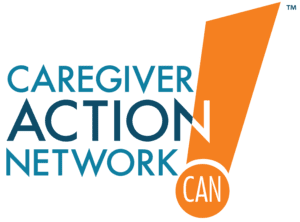Tardive Dyskinesia: Understanding, Symptoms, and Treatment Options
Tardive Dyskinesia: Understanding, Symptoms, and Treatment Options

Tardive Dyskinesia (TD) is a neurological disorder characterized by involuntary, repetitive movements, primarily affecting the face, tongue, and limbs. This condition is most often a side effect of long-term use of antipsychotic medications, typically prescribed for mental health disorders like schizophrenia, but can also come from medications used to treat bipolar disorder and severe depression.
For caregivers and individuals diagnosed with mental health disorders, understanding tardive dyskinesia is critical in managing treatment and improving quality of life.
What Is Tardive Dyskinesia?
Tardive dyskinesia is a condition that most often occurs after prolonged use of antipsychotic medications, particularly those categorized as first-generation antipsychotics (also known as typical antipsychotics). However, it can also result from second-generation (atypical) antipsychotics, some antidepressants, and some antihistamines. TD manifests in various involuntary movements, such as:
- Facial grimacing – Lip smacking, blinking excessively, or sticking out the tongue.
- Choreiform movements – Jerky, involuntary movements of the limbs.
- Dystonic movements – Prolonged muscle contractions that cause twisting or repetitive motions.
Who Is at Risk for Tardive Dyskinesia?
Individuals who have been on antipsychotic medications for a long time are at the greatest risk of developing this condition. According to the National Institute of Neurological Disorders and Stroke (NINDS), approximately 20–50% of individuals on long-term antipsychotic therapy will develop TD. Factors that may increase the risk include:
- Age – Older adults are more prone to developing TD.
- Gender – Women, especially post-menopausal, are more susceptible than men.
- Duration of medication use – The longer a person is on antipsychotics, the higher the risk of TD.
- Type of antipsychotic – First-generation antipsychotics pose a higher risk compared to newer, atypical medications.
Symptoms of Tardive Dyskinesia
The symptoms of TD can be subtle at first but tend to worsen over time. Common symptoms include:
- Involuntary facial movements – Grimacing, lip-smacking, or puckering.
- Jaw and tongue movements – Chewing motions, tongue protrusions.
- Limb movements – Jerky or slow twisting motions of the arms, legs, or torso.
- Difficulty speaking – Changes in speech due to uncontrolled mouth and tongue movements.
These symptoms may come and go, but in some cases, they are permanent. This underscores the importance of early detection and intervention.
Diagnosis and Screening
Diagnosing tardive dyskinesia involves observing the patient’s movement patterns and correlating them with their medication history. Medical professionals may use the Abnormal Involuntary Movement Scale (AIMS) to track and assess the severity of involuntary movements. If TD is suspected, it’s essential to report the symptoms to a healthcare provider for further evaluation.
Treatment Options for TD
While there is no cure for tardive dyskinesia, there are several treatment options available to help manage and reduce symptoms. These include:
Medications:
- VMAT2 Inhibitors – There are FDA-approved medications that can help reduce the severity of tardive dyskinesia symptoms by regulating dopamine levels in the brain.
Adjusting or switching antipsychotic medication – In some cases, switching to a lower dose or transitioning to a second-generation antipsychotic may alleviate symptoms.
Supportive Therapies:
- Physical therapy and speech therapy – These can help patients manage the physical symptoms of tardive dyskinesia, improving motor control and communication abilities.
- Botox injections – For some patients, Botox injections can reduce muscle stiffness and prevent involuntary movements.
Lifestyle and Self-Management:
- Stress management techniques – Symptoms of TD may worsen under stress, so relaxation techniques such as yoga, mindfulness, and meditation can help alleviate stress-related symptoms.
- Regular medical checkups – Ongoing monitoring of medication and symptoms is crucial in managing tardive dyskinesia.
Preventing Tardive Dyskinesia
Prevention strategies for TD focus on minimizing the use of high-risk antipsychotic medications whenever possible. Regular monitoring by healthcare providers, early detection of symptoms, and using the lowest effective dose of antipsychotics are key measures in reducing the risk of TD.
For caregivers, being aware of the potential side effects of long-term antipsychotic medication and advocating for regular screenings and medical evaluations is essential.
Caregiver Support for Tardive Dyskinesia
Caregivers play a critical role in supporting individuals with tardive dyskinesia. Understanding the disorder, managing symptoms, and advocating for appropriate treatment are all part of the caregiving experience. Here are some tips for caregivers:
- Stay informed – Learn about the symptoms of tardive dyskinesia and the treatment options available.
- Communicate with healthcare providers – Regular communication with doctors ensures timely adjustments to treatment plans.
- Encourage physical and mental wellness – Encourage the individual to engage in physical therapy and relaxation techniques to help manage symptoms.
- Seek support – Caregiver support groups and resources can provide emotional support and practical advice for managing the challenges of tardive dyskinesia.
The Importance of Early Intervention
Tardive dyskinesia is a serious side effect of long-term antipsychotic medication use. However, with early diagnosis, appropriate treatment, and ongoing support, individuals with TD can manage their symptoms and maintain a good quality of life. For caregivers, understanding the nuances of tardive dyskinesia is vital in ensuring their loved ones receive the care and attention they need.
For more information on tardive dyskinesia, visit the National Institute of Neurological Disorders and Stroke (NINDS) and the National Organization for Tardive Dyskinesia.



